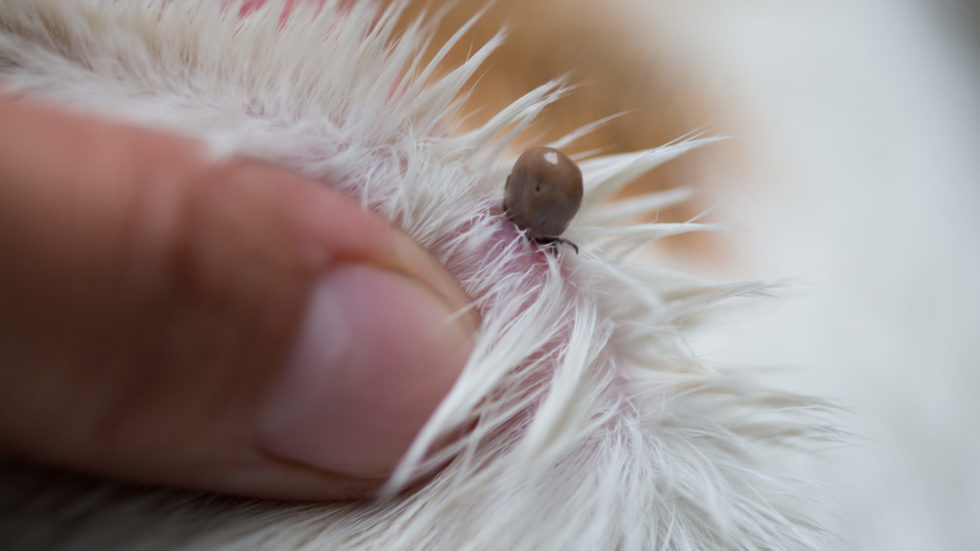Be Tick Aware

Be Tick Aware
Warmer days are on the way, a perfect time to get out and explore the wonderful countryside on our doorstep with our beloved dogs, it is also a time when our much-loved cats might widen their span of territory. Warmer weather provides so many more opportunities for us and our pets, however, the warmer conditions do mean that there are increased risks for our pets with the activity of pesky parasitical ticks.
Ticks are parasites which can attach to any part of your pet’s body before feeding off the blood of our furry friends, however, it is not just our pets at risk, they can also feed from our blood too. Ticks can usually be found living in dense woodland and forested areas in long grass, on forest floors or on low-growing plants, but they can also be found in fields where livestock and deer are present.
During spring and early summer when temperatures are milder, ticks are greater in number and most active, however, they can be active all year round. Ticks do not jump or fly, instead they simply attach themselves to animals or humans passing by, and while not every tick carries infections, and not every bite will transmit disease, the longer a tick feeds, the more likely it
is that an infection will occur.
It is important to keep a close eye on your pet, most owners will only notice a tick present on their animal once a tick has already made their home and started feeding off their pet’s blood, and once fattened up, ticks become far more prominent on a pet’s fur. Most tick treatments on the market do not act as a repellent, in fact they kill the ticks as soon as they start feeding on the blood of pets.
When it comes to carrying out a tick check on your pet, think about the area of the body of your pet that a tick is most likely to take up home. Ticks often like to choose folds of skins or quiet crevices of a pet’s body so make sure that you carry out a thorough nose-to-tail search. It is important to brush against as well as with on a pet’s coat and check around eyes and muzzle as well as the pet’s pads and their toes.
Not Just Cats & Dogs
When it comes to perils of pesky ticks, it is not just cats and dogs at risk, do you have
horses or ponies? They can pick up ticks during rides, bringing them back to stable, the
best time to carry out a tick check is when untacking. Be sure to follow the guidelines for
smaller animals, look in and around the hidden areas – look under the mane, inside ears
and nostrils, the dock of the tail and on the animal’s genitals.





